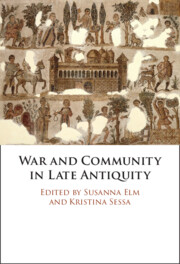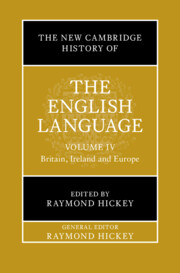Refine search
Actions for selected content:
3388064 results
Charismatic Nations
- A Cultural History of Nationalism in Europe from 1800 to the Present
- Coming soon
-
- Expected online publication date:
- February 2026
- Print publication:
- 28 February 2026
-
- Book
- Export citation
Visiting the Oracle at Dodona
- Contexts of Unknowing in Ancient Greek Religion
- Coming soon
-
- Expected online publication date:
- February 2026
- Print publication:
- 28 February 2026
-
- Book
- Export citation

The Practical Mind
- Skill, Knowledge, and Intelligence
- Coming soon
-
- Expected online publication date:
- February 2026
- Print publication:
- 28 February 2026
-
- Book
- Export citation
The New Cambridge History of the English Language
- Africa, Asia, Australasia and the Pacific
- Coming soon
-
- Expected online publication date:
- February 2026
- Print publication:
- 28 February 2026
-
- Book
- Export citation
The Fall of the Tang
- Gao Pian's Trials of Allegiance
- Coming soon
-
- Expected online publication date:
- February 2026
- Print publication:
- 28 February 2026
-
- Book
- Export citation

Empirical Research and Writing
- A Political Science Student's Practical Guide
- Coming soon
-
- Expected online publication date:
- February 2026
- Print publication:
- 28 February 2026
-
- Textbook
- Export citation

Death, Diversion, and Departure
- Voter Exit and the Persistence of Authoritarianism in Zimbabwe
- Coming soon
-
- Expected online publication date:
- February 2026
- Print publication:
- 28 February 2026
-
- Book
- Export citation

Studies in Greek Literature
- Coming soon
-
- Expected online publication date:
- February 2026
- Print publication:
- 28 February 2026
-
- Book
- Export citation
An Unholy Pedagogy
- Visions of Learning from Mesoamerica, 1300-1650
- Coming soon
-
- Expected online publication date:
- February 2026
- Print publication:
- 28 February 2026
-
- Book
- Export citation

Insects and the Enlightenment
- Human-Arthropod Entanglement in the British Eighteenth Century
- Coming soon
-
- Expected online publication date:
- February 2026
- Print publication:
- 28 February 2026
-
- Book
- Export citation

Contextuality in Random Variables
- A Systematic Introduction
- Coming soon
-
- Expected online publication date:
- February 2026
- Print publication:
- 28 February 2026
-
- Book
- Export citation

Terror on Trial
- An Ethnography of French Courts
- Coming soon
-
- Expected online publication date:
- February 2026
- Print publication:
- 28 February 2026
-
- Book
- Export citation

Locally Flat Embeddings of 3-Manifolds in S4
- Coming soon
-
- Expected online publication date:
- February 2026
- Print publication:
- 28 February 2026
-
- Book
- Export citation

The History of European Union Law
- Constitutional Practice, 1950 to 1993
- Coming soon
-
- Expected online publication date:
- February 2026
- Print publication:
- 28 February 2026
-
- Book
- Export citation

War and Community in Late Antiquity
- Coming soon
-
- Expected online publication date:
- February 2026
- Print publication:
- 28 February 2026
-
- Book
- Export citation

Writing Politics in Modern Britain
- Genre and Cultures of Publishing since 1900
- Coming soon
-
- Expected online publication date:
- February 2026
- Print publication:
- 28 February 2026
-
- Book
- Export citation
Complicity and the Antebellum Moral Imagination
- Coming soon
-
- Expected online publication date:
- February 2026
- Print publication:
- 28 February 2026
-
- Book
- Export citation

Operating Room Leadership and Perioperative Practice Management
- Coming soon
-
- Expected online publication date:
- February 2026
- Print publication:
- 01 April 2027
-
- Book
- Export citation
A Concise History of Ireland
- Coming soon
-
- Expected online publication date:
- February 2026
- Print publication:
- 28 February 2026
-
- Book
- Export citation

The New Cambridge History of the English Language
- Britain, Ireland and Europe
- Coming soon
-
- Expected online publication date:
- February 2026
- Print publication:
- 28 February 2026
-
- Book
- Export citation
